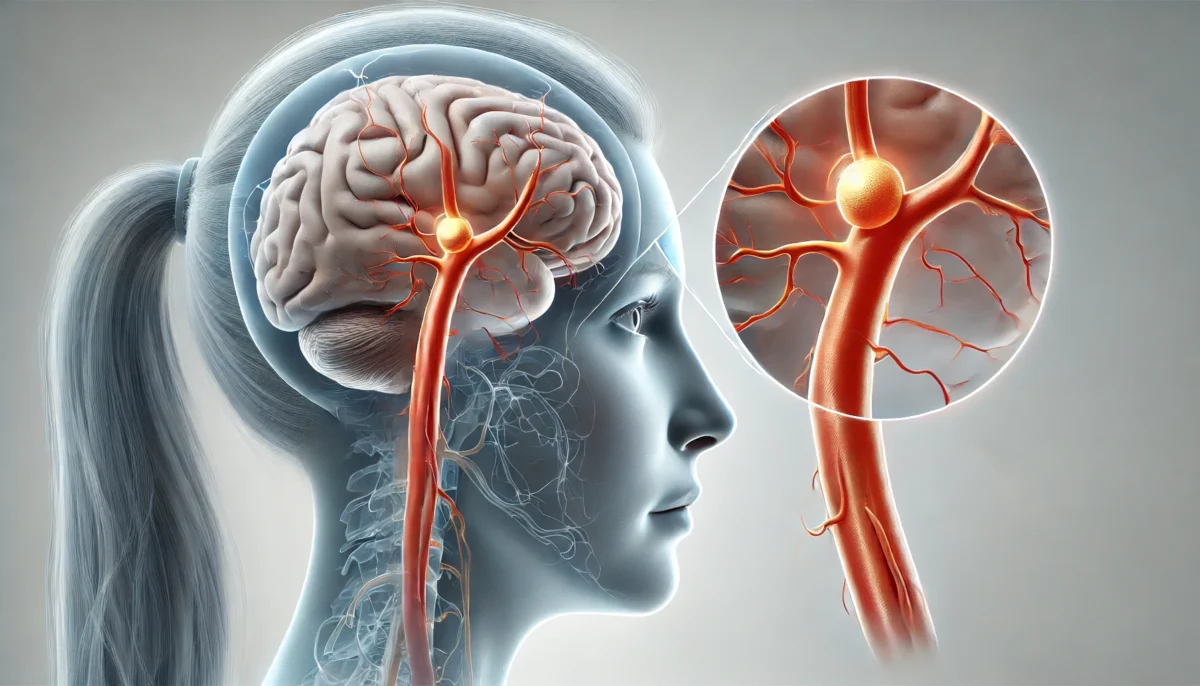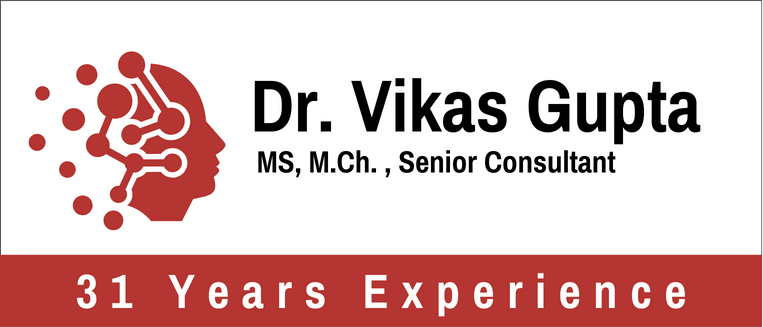
A brain aneurysm, also known as a cerebral aneurysm, is a balloon-like bulge in a blood vessel that often grows silently inside the brain. It may not cause any symptoms for years. But when it ruptures, the consequences can be devastating: a hemorrhagic stroke, permanent brain damage, or even sudden death.
That’s why it’s so important to recognize the early signs of a brain aneurysm and act quickly. From neck pain and nausea to changes in vision and cognition, your body often gives subtle warnings long before a rupture occurs.
In this blog, we’ll break down the top brain aneurysm warning signs, help you understand which symptoms of brain aneurysm to watch for, and explain why even young adults aren’t immune. Don’t ignore what could be the most critical signal your brain ever sends.
What Is a Brain Aneurysm?
A brain aneurysm occurs when a weak spot in a blood vessel wall within the brain swells or balloons due to pressure. Most aneurysms develop silently and don’t show symptoms until they become large or rupture.
There are two primary types:
- Unruptured aneurysms: These may not cause any symptoms and are often discovered during imaging for unrelated conditions.
- Ruptured aneurysms: These leak blood into the brain (hemorrhage), causing sudden, severe symptoms and requiring emergency medical care.
Critical Symptoms of a Brain Aneurysm
Ignoring symptoms of a brain aneurysm can lead to devastating consequences. Ruptured brain aneurysms have a mortality rate of up to 50%, and nearly two-thirds of survivors suffer from permanent neurological damage.
However, not all brain aneurysms rupture. Catching an aneurysm early, before it bursts, can save your life. Understanding the warning signs of a brain aneurysm can lead to a timely diagnosis and treatment.
1. Sudden and Severe Headache
One of the most alarming brain aneurysm warning signs is a sudden, severe headache that strikes out of nowhere. Often referred to as a “thunderclap headache,” it develops abruptly and reaches its peak intensity within seconds.
Unlike a typical migraine or tension headache, this pain is described as sharp, unbearable, and explosive. It may also be accompanied by nausea, vomiting, or neck stiffness, all of which signal a potential aneurysm rupture and demand immediate emergency care.
What You Should Do:
- Seek emergency medical attention immediately.
- Do not assume it’s just a migraine or stress-related headache.
“In many cases, patients ignore early symptoms like headaches or vision issues, thinking it’s stress or fatigue. But these can be life-saving warning signs of a brain aneurysm,” says Dr. Vikas Gupta.
2. Stiff Neck or Neck Pain
Neck stiffness or pain can be a symptom of a ruptured brain aneurysm. This happens due to irritation of the meninges (the lining of the brain) by leaked blood. The stiffness may extend down into the spine, making it hard to move your head.
In some cases, even an unruptured aneurysm pressing on surrounding tissues can cause neck discomfort.
Don’t Ignore If You Experience:
- Neck pain along with a severe headache
- Trouble bending your neck forward
- Neck pain combined with light sensitivity or nausea
3. Nausea and Vomiting
Nausea and vomiting are common symptoms of a brain aneurysm, especially when accompanied by a headache. They occur as the brain reacts to the pressure from bleeding or swelling.
In some patients, nausea appears before the headache or visual symptoms, making it an essential early warning sign.
Take Action If:
- Nausea arises suddenly with no apparent cause
- Vomiting occurs with a severe headache or confusion
- It’s not related to food poisoning or stomach flu
4. Blurred or Double Vision
Vision problems can occur due to the pressure an aneurysm puts on the optic nerves. If the aneurysm is near the eye or the base of the brain, it can distort vision or cause eye pain and sensitivity to light (photophobia).
Don’t Ignore If You Experience:
- Double vision or blurry vision
- Drooping eyelids (ptosis)
- Sudden vision loss in one or both eyes
5. Sensitivity to Light
Photophobia, or light sensitivity, often accompanies other symptoms like headache, nausea, or stiff neck in brain aneurysm patients. It’s especially significant when seen in combination, as it may indicate bleeding into the brain (subarachnoid hemorrhage).
6. Seizures
Seizures can occur if the aneurysm irritates or damages brain tissue. This is more common after rupture but may also occur in people with large or growing aneurysms.
Seek Immediate Care If:
- You experience a first-time seizure
- A known aneurysm causes a seizure
- Seizures come with confusion or headache
7. Cognitive or Neurological Disturbances
Watch out for the following changes in behavior or mental function:
- Sudden confusion
- Slurred speech
- Trouble understanding language
- Weakness or numbness, especially on one side of the body
These signs resemble a stroke and may occur due to bleeding or pressure on brain structures.
8. Pain Behind or Around the Eye
An unruptured aneurysm pressing on the nerves near the eyes can cause pain behind the eye, eye movement problems, or drooping eyelids.
Persistent pain around the eye should not be dismissed, especially if it worsens over time or is accompanied by other neurological symptoms.
9. Difficulty Walking or Loss of Balance
Unexplained clumsiness, trouble with coordination, or feeling off-balance can signal damage to brain areas responsible for motor function. In some cases, patients may also experience vertigo or dizziness before other symptoms appear.
One of the patients of Dr. Vikas Gupta shared, “I had been suffering from frequent, severe headaches and occasional blurred vision, which I initially ignored. When the pain became unbearable, I consulted Dr. Vikas Gupta. After a detailed MRI and angiography, I was diagnosed with an unruptured brain aneurysm. Thankfully, it was caught early, and Dr. Gupta recommended endovascular coiling. The surgery went smoothly, and I was discharged within a few days. Today, I feel healthier and more aware of my health.”
Brain Aneurysm in Young Adults: Are You at Risk?
While brain aneurysms are more common in people over 40, they can and do occur in younger individuals, sometimes as early as their 20s or 30s.
Risk Factors in Young Adults:
- Family history of aneurysm
- Smoking and alcohol abuse
- Drug use (primarily cocaine)
- High blood pressure
- Genetic disorders like Ehlers-Danlos or polycystic kidney disease
Young adults often dismiss early signs of brain aneurysm as migraines, fatigue, or stress. That delay can be dangerous.
Dr. Vikas Gupta adds, “We’re seeing more cases in young adults than before, especially due to lifestyle factors like smoking and drug use. Awareness and early screening can make all the difference”.
What Happens When an Aneurysm Ruptures?
When an aneurysm bursts, it releases blood into the space around the brain, causing a subarachnoid hemorrhage. This triggers:
- Sudden, explosive headache
- Nausea and vomiting
- Seizures
- Loss of consciousness
- Rapid neurological decline
Up to 25% of people with a ruptured aneurysm die within 24 hours. Early surgical intervention, such as coiling or clipping, offers the best chance of survival.
Another patient shared, “One morning, I collapsed with a sudden, sharp headache and lost consciousness. I was rushed to the hospital, where Dr. Vikas Gupta confirmed a ruptured brain aneurysm. I underwent emergency clipping surgery that same night. It was terrifying, but Dr. Gupta and his team were incredibly skilled and compassionate. The surgery saved my life. Recovery took time, but I’ve regained full mobility and mental clarity.”
When to Seek Medical Help
Call emergency services immediately if you or someone else experiences:
- A sudden, severe headache
- Fainting or loss of consciousness
- Sudden confusion or speech difficulty
- Seizure with no known cause
- Eye pain, vision changes, and vomiting with headache
Even if symptoms seem mild or pass quickly, they could be signs of a leaking aneurysm, a warning before a complete rupture.
Prevention and Lifestyle Tips
While not all brain aneurysms are preventable, you can lower your risk by:
- Controlling blood pressure
- Quitting smoking
- Limiting alcohol intake
- Avoiding recreational drug use
- Managing cholesterol and diabetes
- Staying physically active and eating a balanced diet
If you have a family history of brain aneurysms, talk to your doctor about screening tests.
Final Thoughts
Brain aneurysms are often silent until they rupture. Recognizing brain aneurysm warning signs, such as neck pain, nausea, or a sudden severe headache, can be the key to saving a life. This is especially important for young adults, who may overlook these symptoms or attribute them to everyday stress.
Don’t ignore early signs of a brain aneurysm. If something feels “off,” seek help. Acting fast can prevent devastating outcomes and lead to a full recovery.
FAQs About Brain Aneurysm
1. How is a brain aneurysm diagnosed?
Brain aneurysm is diagnosed through brain imaging such as CT scans, MRIs, or cerebral angiography. A lumbar puncture is also performed if bleeding is suspected.
2. Can young adults get brain aneurysms?
Brain aneurysms in young adults are less common but still occur, especially in those with a family history or lifestyle risks like smoking and drug use.
3. What are the chances of surviving a ruptured aneurysm?
Survival depends on how quickly treatment is given. The survival rate drops significantly without immediate medical care.
4. Can a brain aneurysm be cured without surgery?
Small, unruptured aneurysms may not need surgery and can be monitored with regular scans. However, treatment is usually required if there’s a high risk of rupture.
5. Can a brain aneurysm shrink or go away on its own?
Most aneurysms don’t shrink naturally. Small, stable aneurysms may remain unchanged for years, but they require regular monitoring to ensure their stability.
Explore more blogs: Brain Aneurysms: What Are Its Causes, Symptoms, and Treatment
